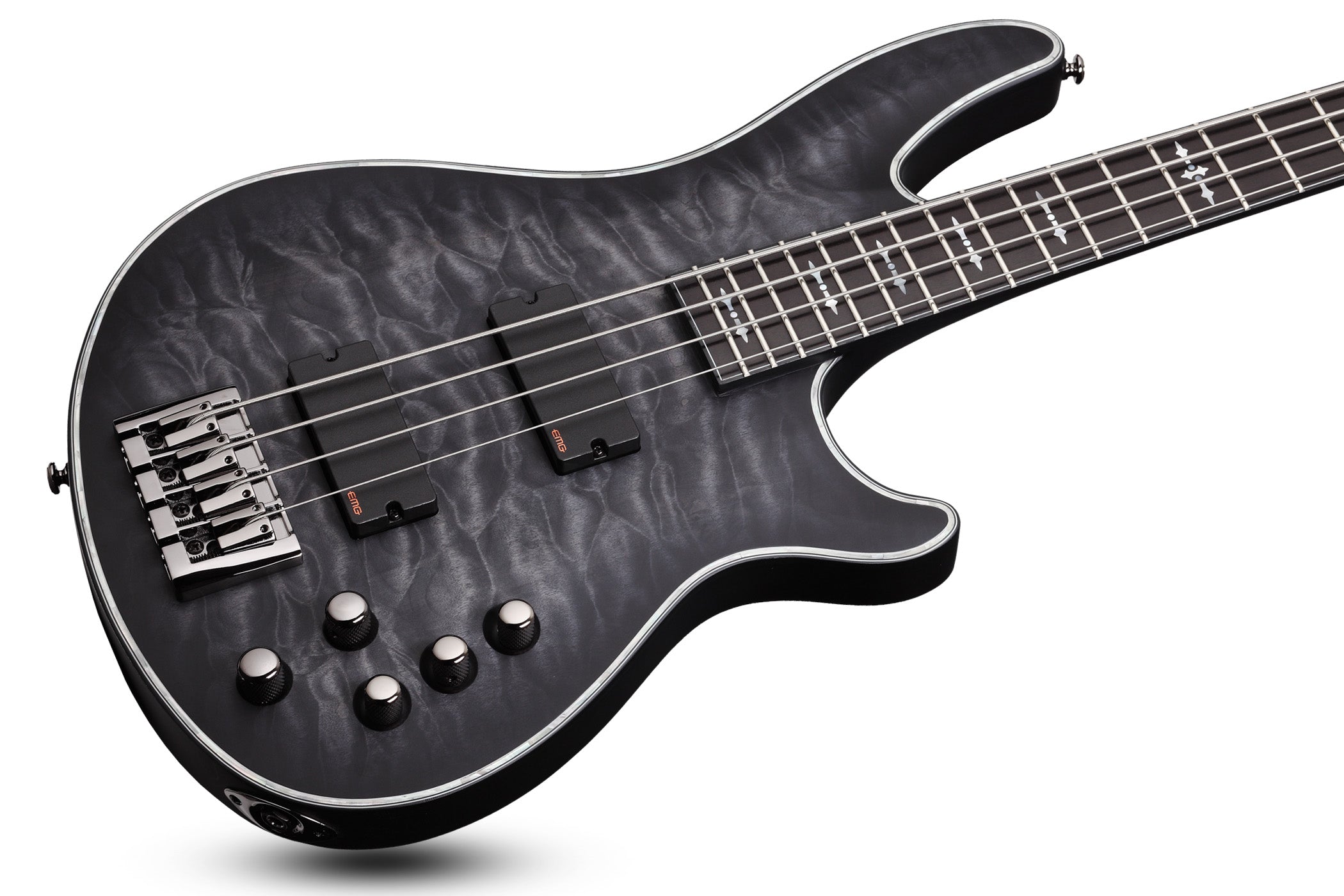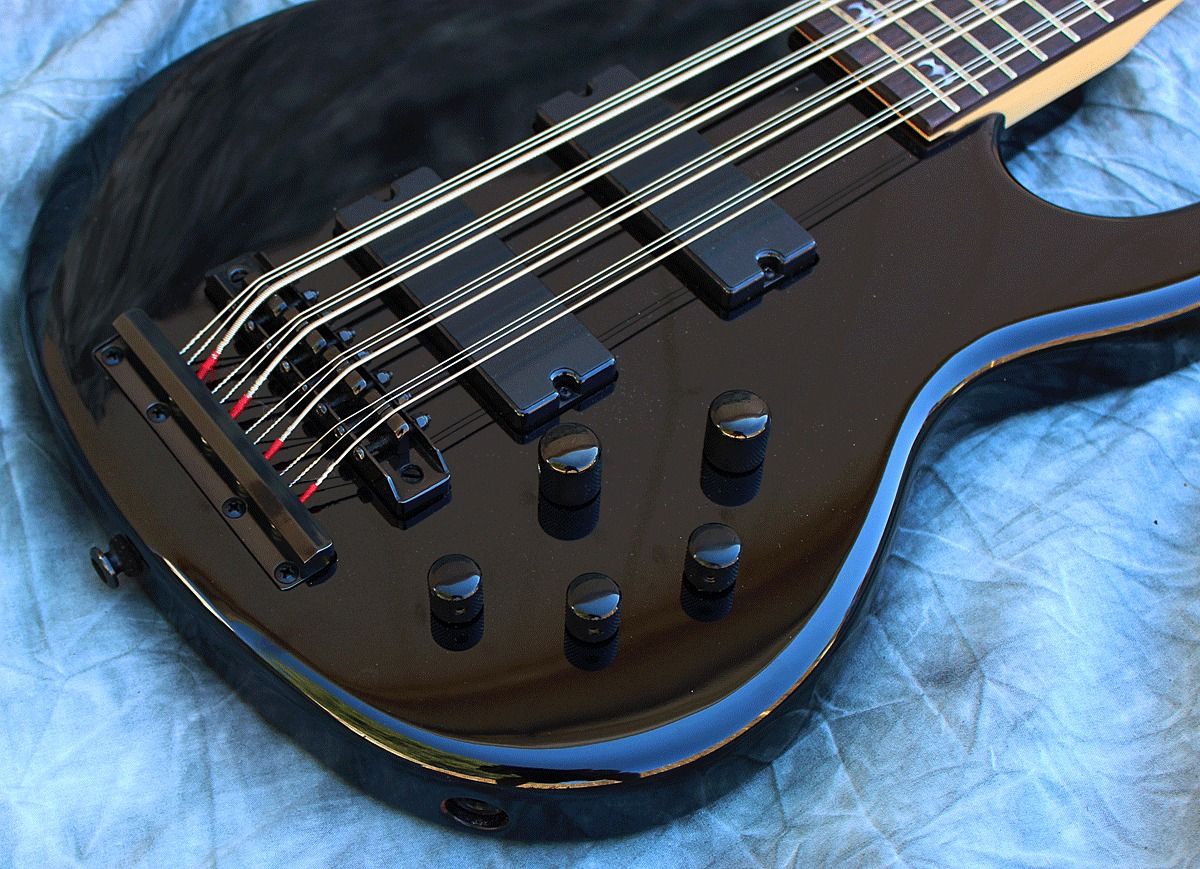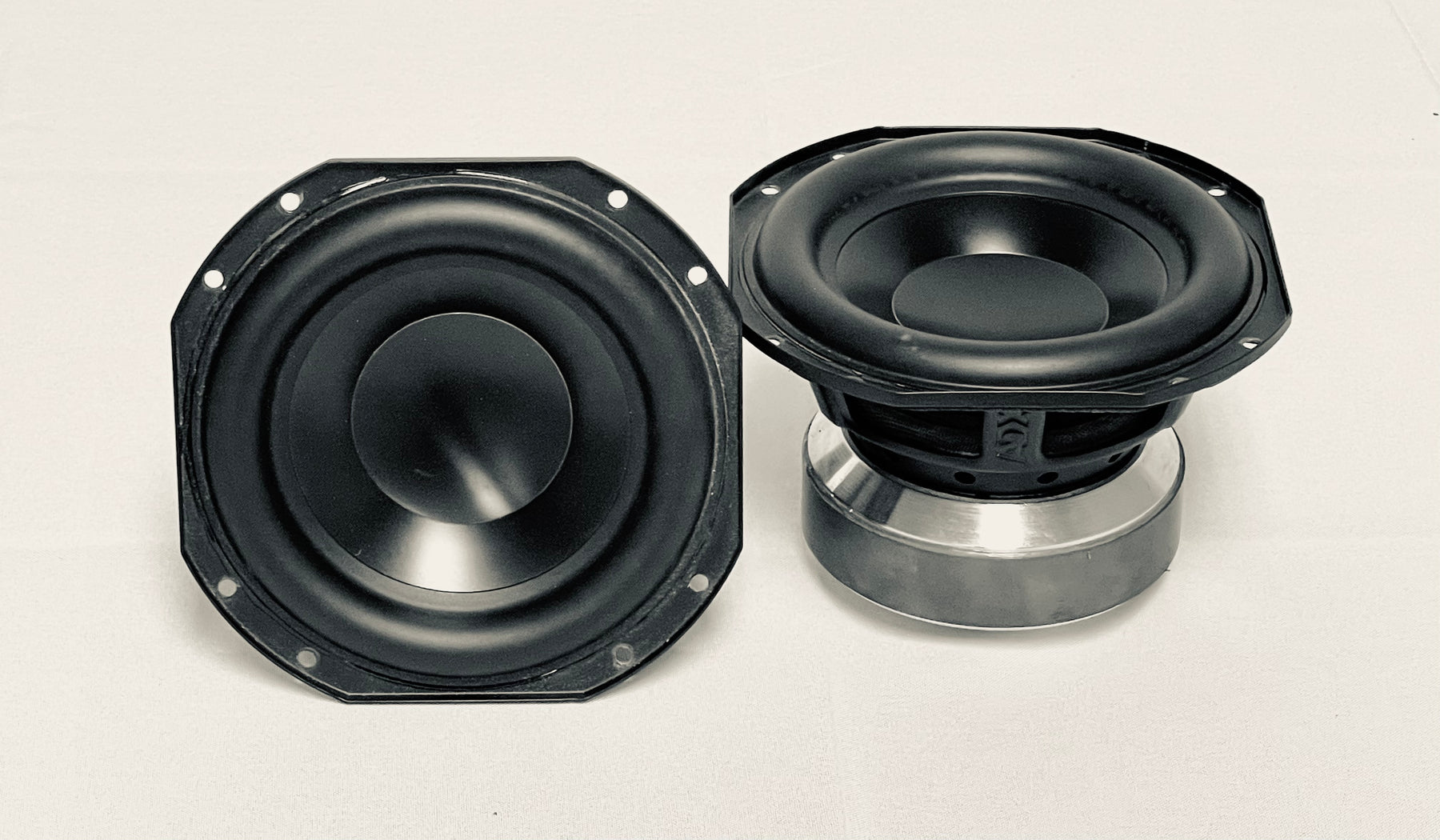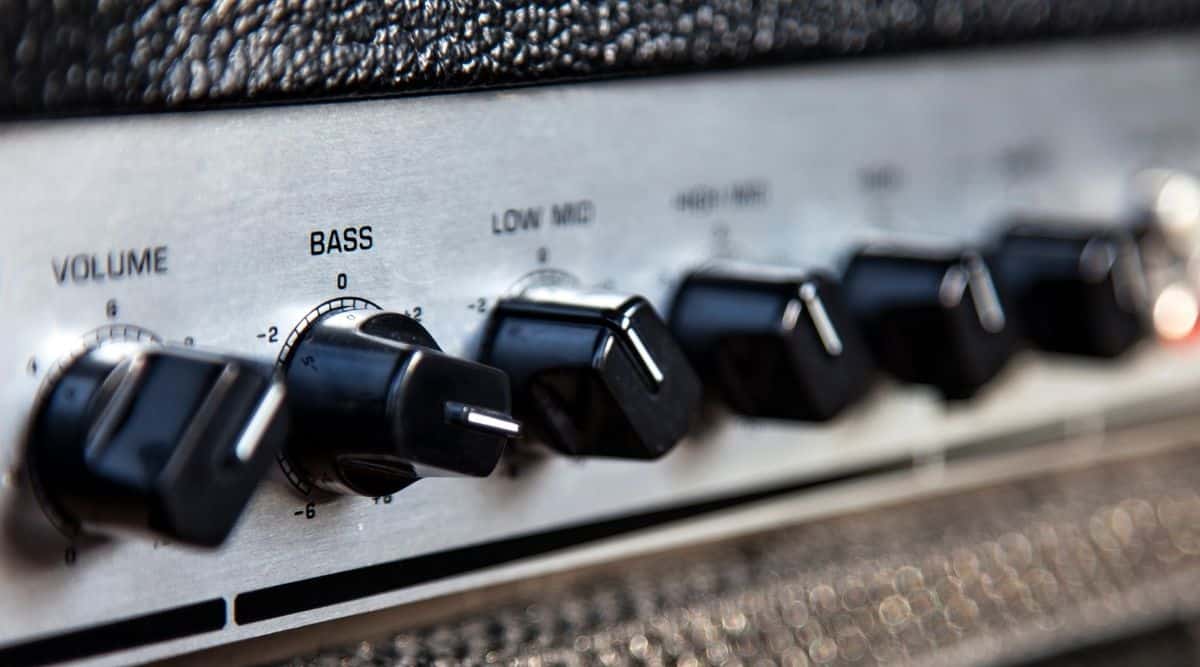Home>Instruments>Bass>What Is A Sub Bass


Bass
What Is A Sub Bass
Modified: March 7, 2024
Discover what a sub bass is and how it adds depth and power to your music. Explore the essential role of bass in creating a rich and impactful sonic experience.
(Many of the links in this article redirect to a specific reviewed product. Your purchase of these products through affiliate links helps to generate commission for AudioLover.com, at no extra cost. Learn more)
Table of Contents
- Introduction
- Definition of Sub Bass
- Characteristics of Sub Bass
- Importance of Sub Bass in Music Production
- Sources and Techniques for Creating Sub Bass
- Challenges and Considerations When Working with Sub Bass
- Sub Bass in Different Music Genres
- Tips for Mixing and Balancing Sub Bass
- Sub Bass in Live Performances
- Conclusion
Introduction
Welcome to the world of bass, where deep, resonant tones rule and listeners are transported to a different dimension of sound. Among the various types of bass, sub bass stands out as the foundation of many musical genres, providing a rich, low-frequency sonic experience. In this article, we will explore the mesmerizing world of sub bass and its significance in music production.
Sub bass refers to the extremely low-frequency range below the traditional bass frequencies. It is characterized by deep, rumbling tones that can be felt as much as heard. While the term “bass” encompasses a broader range of frequencies, sub bass specifically focuses on the lowest of the low, typically ranging from 20Hz to 60Hz. This range is responsible for creating a powerful, impactful, and immersive listening experience.
Sub bass holds a crucial role in music production, as it provides the foundation and power to the overall sound. It adds depth and richness to the mix, enhancing the overall impact and emotional resonance. By creating a sense of physicality and presence, sub bass can become the driving force behind the energy and intensity of a track.
Whether you’re listening to electronic music, hip-hop, or even classical compositions, sub bass will often play a prominent role. It can be found in the booming kick drums of EDM tracks, the heavy basslines in trap music, or the orchestral thunders in film scores. No matter the genre, the presence of sub bass ensures a captivating and immersive experience for the listener.
Now that we have a general understanding of what sub bass is and its significance in music production, let’s dive deeper into its characteristics and explore the techniques and challenges involved in creating and working with sub bass.
Definition of Sub Bass
Sub bass is a term used to describe the lowest frequencies in the bass range of sound. It refers to the deep, rumbling tones that exist below the traditional bass frequencies. While regular bass frequencies usually range from around 60Hz to 250Hz, sub bass extends even lower, typically ranging from 20Hz to 60Hz.
Sub bass can be felt as much as it is heard, creating a visceral and physical experience for the listener. It is characterized by its powerful and resonant qualities, adding depth and intensity to the overall sound. Sub bass is often created by synthesizers, samplers, or bass instruments that can produce these extremely low frequencies.
In music production, sub bass serves as the foundation on which the rest of the music is built. It provides a sense of weight and power, creating a solid and steady rhythmic foundation. Sub bass adds a sense of depth and warmth to the mix, enhancing the overall sonic experience.
Due to its low frequency nature, sub bass is highly effective in creating a physical impact. It can provoke a physical response in the listener, causing vibrations that can be felt in the body. This quality is especially evident in live performances or in venues with powerful sound systems, where the sub bass can create a powerful and immersive experience.
The importance of sub bass can’t be overstated, as it contributes significantly to the overall emotional impact of the music. It has the ability to create a sense of tension, excitement, or even a feeling of darkness and mystery. The strategic use of sub bass can shape the mood and atmosphere of a track, making it an essential element in various musical genres.
Now that we understand the definition and significance of sub bass, let’s explore its characteristics and understand why it is so crucial in music production.
Characteristics of Sub Bass
Sub bass has several defining characteristics that set it apart from other frequencies and make it a unique and essential element in music production. Understanding these characteristics will help us appreciate its impact on the overall sound and how it shapes the listening experience.
1. Low Frequency Range: Sub bass occupies the lowest end of the frequency spectrum, typically ranging from 20Hz to 60Hz. It is the deepest, rumbling range that can be felt as much as heard, creating a powerful and immersive sonic experience.
2. Power and Impact: Sub bass has a tremendous amount of power and impact due to its low frequencies. It adds weight and intensity to the track, making it feel grounded and solid. It can create a physical impact on the listener, provoking a visceral response and enhancing the emotional impact of the music.
3. Extension and Resonance: Sub bass has a long sustain, meaning the low frequencies can linger and resonate, creating a sense of depth and warmth in the mix. This extended decay allows for a more immersive and enveloping listening experience.
4. Rhythmic Foundation: Sub bass serves as the rhythmic foundation of the music. It provides a steady and solid bassline that helps establish the groove and drive of the track. Its low frequency nature adds a sense of weight and stability to the rhythm section.
5. Emotional Impact: Sub bass has the ability to evoke strong emotions in the listener. Whether it’s a sense of anticipation, excitement, or even a feeling of darkness and mystery, sub bass can shape the mood and atmosphere of a track. It adds a certain depth and intensity that elevates the emotional impact of the music.
6. Integration and Blending: Sub bass needs to blend seamlessly with the rest of the mix. It should be felt and heard without overpowering other elements of the music. Achieving a balance between the sub bass and other frequencies is crucial to maintain clarity and cohesion in the overall sound.
7. Room Interaction: Sub bass frequencies can interact with the physical space in which music is played. In certain venues or with powerful sound systems, sub bass can create vibrations that are felt in the body, enhancing the immersive and physical experience of live performances.
Understanding the unique characteristics of sub bass allows us to harness its power and incorporate it effectively into music production. Let’s explore the importance of sub bass in more detail and its role in creating impactful and captivating tracks.
Importance of Sub Bass in Music Production
Sub bass plays a crucial role in music production, contributing to the overall impact and sonic experience of a track. It adds depth, power, and emotional resonance, enhancing the listening experience and creating a captivating atmosphere. Here are some key reasons why sub bass is important in music production:
1. Foundation and Power: Sub bass serves as the foundation of the music, providing a solid and powerful base upon which other elements can build. It adds weight and impact to the overall sound, creating a sense of power and intensity that draws the listener in.
2. Emotional Impact: Sub bass has the ability to evoke strong emotions in the listener. The deep vibrations and rumbling tones can create a sense of anticipation, excitement, or even a feeling of darkness and mystery. By utilizing sub bass strategically, music producers can shape the mood and atmosphere of a track, enhancing its emotional impact.
3. Groove and Rhythm: Sub bass plays a pivotal role in establishing the groove and rhythm of a track. It provides a steady and solid bassline that anchors the other elements and ensures a cohesive and tight rhythm section. The low-frequency nature of sub bass adds weight and stability to the musical composition.
4. Spatial Depth: Sub bass adds a sense of depth and spatial quality to the mix. By occupying the lower end of the frequency spectrum, it creates a three-dimensional sound experience, giving the music a sense of space and realism. When properly mixed and balanced, sub bass contributes to the overall sonic panorama, enhancing the immersion of the listener.
5. Impact and Energy: Sub bass brings a significant amount of impact and energy to a track. Its low frequencies can create a physical impact, shaking the floor and vibrating the listener’s body. This powerful and immersive experience is particularly evident in live performances and clubs with powerful sound systems.
6. Genre-specific Significance: Different music genres rely on sub bass in various ways. For example, electronic dance music (EDM) heavily emphasizes sub bass to drive the energy of the track and enhance the dancefloor experience. Hip-hop often features sub bass in its iconic basslines, while film scores leverage sub bass to create tension and suspense.
7. Contrast and Dynamism: Properly utilizing sub bass can create contrast and dynamism within a song. By strategically dropping or introducing the sub bass, producers can build anticipation, intensify certain sections, and create moments of impact and release. This adds depth and interest to the overall composition.
Understanding the importance of sub bass allows music producers to harness its power and incorporate it effectively into their tracks. It serves as a fundamental element that enhances the emotional impact, rhythmic drive, and sonic depth of music productions across various genres.
Sources and Techniques for Creating Sub Bass
Creating sub bass requires careful selection of sound sources and the use of specific techniques to achieve the desired deep and rumbling tones. Here are some common sources and techniques used in music production to create sub bass:
1. Synthesizers: One of the most popular methods for creating sub bass is using synthesizers. Synths offer extensive control over shaping and manipulating low-frequency sounds. Many synthesizers have dedicated sub-oscillators that generate pure sine waves, which are well-suited for creating sub bass tones. By adjusting parameters such as envelope, filter, and oscillator settings, producers can shape the sub bass to their liking.
2. Samplers: Another method is using samplers to trigger low-frequency sounds. This involves sampling pre-existing bass tones or using recorded low-frequency elements and playing them back at a lower pitch. By manipulating the playback speed and applying pitch-shifting techniques, producers can create deep sub bass tones with ease.
3. Bass Instruments: Bass guitars, double bass, or any other bass instruments can also be used to create sub bass. These acoustic instruments naturally produce low-frequency tones that can be amplified and processed to enhance their depth and impact. By using techniques such as equalization, compression, and saturation, producers can shape the bass instrument’s tone and emphasize the sub bass frequencies.
4. Layering: Layering involves combining multiple sound sources together to create a richer and more complex sub bass sound. This technique allows producers to blend different elements, such as a synthesized sub bass with a sampled bass tone or a sub bass with a bass instrument recording, to create a unique and powerful sub bass texture. Proper EQ and level adjustments are crucial to ensure the sub bass elements work cohesively and do not overpower each other.
5. Sound Manipulation: Sound manipulation techniques can be applied to enhance and transform sub bass tones. This includes the use of effects such as saturation, distortion, modulation, and spatial effects like reverb and delay. These effects can add character, depth, and movement to the sub bass, making it more interesting and dynamic within the mix.
6. Sidechain Compression: Sidechain compression is commonly used to create a more pronounced and rhythmic sub bass sound. By sidechaining the sub bass to a kick drum or other prominent elements in the mix, the sub bass is temporarily attenuated each time the triggering source hits. This technique helps create a tighter and more defined relationship between the kick and the sub bass, allowing them to work together without clashing.
7. Monitor and Room Calibration: When working with sub bass, it’s essential to have accurate monitoring and room calibration. Sub bass frequencies can interact with the physical space and studio environment, leading to inconsistencies and phase cancellations. Proper monitor placement, acoustic treatment, and room calibration can help ensure that sub bass is represented accurately, enabling better decisions during the mixing and mastering process.
Experimentation with different sources and techniques is key to finding the right combination for creating sub bass that fits the specific requirements of a track. By combining these techniques and using sound manipulation tools effectively, producers can craft deep and impactful sub bass tones that elevate their music production.
Challenges and Considerations When Working with Sub Bass
Working with sub bass presents its own set of challenges and considerations that music producers need to be aware of. These challenges can affect the overall mix, clarity, and impact of the sub bass. Here are some key considerations to keep in mind:
1. Monitoring System: Sub bass frequencies require proper monitoring to accurately hear and evaluate their impact. Regular consumer speakers or headphones may not accurately reproduce sub bass frequencies, leading to a skewed perception of the mix. Investing in a quality monitoring system with dedicated subwoofers and ensuring accurate low-frequency representation is essential for making informed mixing decisions.
2. Low-End Clutter: While sub bass adds power and depth to a mix, it can also create low-end clutter if not properly controlled. Competing low-frequency elements, such as kick drums, basslines, and sub bass, can muddy the mix and result in an indistinct low-end. Careful EQ, sidechain compression, and level balancing are necessary to ensure each element has its own space in the mix.
3. Harmonic Clashes: Harmony and tonal clashes can arise between sub bass and other elements, particularly when complex chords or basslines are present. Dissonant intervals and conflicting frequencies can result in muddiness and undesirable sonic artifacts. It’s important to assess the harmonic relationships and make adjustments to ensure the sub bass works harmoniously with other harmonic elements in the mix.
4. Phase Issues: Sub bass frequencies are susceptible to phase cancellations when played through multiple speakers or in rooms with poor acoustic treatment. These cancellations can result in a loss of impact and uneven sub bass response. Proper monitoring and room calibration, as well as managing the phase relationships between speakers, will help minimize these issues.
5. Translation to Different Playback Systems: It’s crucial to consider how the sub bass will translate across different playback systems, such as car stereos, smartphones, and club sound systems. Sub bass that sounds balanced and impactful on a professional studio setup might be excessive or lacking on other systems. Regular reference checks on different playback devices can help ensure a solid sub bass experience across various platforms.
6. Loudness and Dynamic Range: Sub bass can easily overpower the rest of the mix due to its low-frequency nature. Striking the right balance between the sub bass and other elements is essential for maintaining clarity and achieving an even mix. Careful attention should also be paid to the dynamic range of the sub bass, ensuring it sits well within the overall dynamics of the track.
7. Room Acoustics: The characteristics of the room where the music is mixed and mastered can significantly influence the perception of sub bass. Resonances and standing waves can cause uneven low-frequency response, leading to inaccuracies in the mix. Acoustic treatment, bass traps, and room calibration can help mitigate these issues and provide a more accurate representation of the sub bass frequencies.
By being aware of these challenges and considerations, music producers can make informed decisions when working with sub bass, ensuring a powerful and balanced low-frequency experience that translates well across different playback systems.
Sub Bass in Different Music Genres
The creative use of sub bass varies across different music genres, with each genre utilizing it in unique and distinct ways. Let’s explore how sub bass manifests in various genres and how it contributes to their overall sound:
1. Electronic Dance Music (EDM): Sub bass is an integral part of EDM genres like Dubstep, Trap, and Drum and Bass. It drives the energy and impact of the music, often taking center stage with powerful and heavily modulated basslines. Sub bass frequencies are manipulated and distorted to create intense drops and buildups, generating excitement and dancefloor energy.
2. Hip-Hop and R&B: Hip-hop and R&B rely on sub bass for their signature heavy and booming low-end. Sub bass provides weight and depth to the basslines, complementing the heavy-hitting drum patterns. It is often used to carry the melodic elements of the track, adding a sense of power and groove.
3. Rock and Metal: Sub bass is not as prominent in rock and metal genres compared to electronic genres, but it still plays a role in adding depth and impact. It can be used to enhance the heaviness and intensity of the music, providing a solid foundation for the guitar and drum-driven arrangements.
4. Film Scores and Soundtracks: In the realm of film scores and soundtracks, sub bass is used to create tension, suspense, and a sense of grandeur. Deep rumbling tones and low-frequency drones add a dramatic backdrop to cinematic moments, heightening the emotional impact of the visuals.
5. Ambient and Experimental: Sub bass is often explored extensively in ambient and experimental genres. It is used to create atmospheric and expansive soundscapes, with sustained and evolving low frequencies that envelop the listener and evoke a sense of depth and introspection.
6. Reggae and Dub: Sub bass is a prominent feature of reggae and dub music, often referred to as the “foundation” in these genres. The emphasis on sub bass creates a solid and driving rhythm, with deep, throbbing basslines that provide the backbone for the infectious grooves.
7. Pop and Mainstream Music: While not as explicitly pronounced as in other genres, sub bass still makes appearances in pop and mainstream music. It subtly contributes to the overall richness and impact of the mix, enhancing the low-end of basslines, drums, and synths to create a fuller and more immersive sonic experience.
Each genre utilizes sub bass to create a distinct sonic identity, whether it’s the immersive drops in EDM, the heavy basslines in hip-hop, or the atmospheric soundscapes in ambient music. The creative use of sub bass enhances the emotional impact, groove, and overall experience of the music in these diverse genres.
Tips for Mixing and Balancing Sub Bass
Mixing and balancing sub bass can be a challenging task, as its low-frequency nature requires careful attention to ensure it integrates well with the rest of the mix while maintaining clarity and impact. Here are some tips to help you achieve a well-balanced and impactful sub bass mix:
1. Monitor and EQ: Use accurate monitoring systems with dedicated subwoofers to ensure you can hear the sub bass frequencies accurately. Employ EQ to carve out unwanted frequencies and shape the sub bass to fit the track. Pay attention to the fundamental frequencies, harmonics, and any resonant frequencies that may cause muddiness or masking in the mix.
2. Sidechain Compression: Apply sidechain compression to create space for the sub bass and prevent it from clashing with other elements, particularly the kick drum. Use a fast attack and release settings to momentarily attenuate the sub bass when the kick drum hits, allowing both elements to coexist without overwhelming each other. This technique helps maintain clarity and impact in the low-end.
3. Level Balancing: Ensure the sub bass is balanced properly with the rest of the elements in the mix. Adjust the level of the sub bass relative to other bass instruments, such as bass guitars, synths, or sampled basslines, to create a cohesive and balanced low-frequency foundation. Use reference tracks as a guideline to help achieve an appropriate sub bass level in relation to the overall mix.
4. Mono Compatibility: Check the mono compatibility of the sub bass to ensure it translates accurately on systems that collapse the stereo image. Sub bass information should be heard clearly in mono, without any phase cancellations or loss of impact. Use a stereo imaging tool or a mono monitoring option to evaluate the mono compatibility of the sub bass.
5. Layering and Saturation: Experiment with layering different sub bass elements to create a richer and fuller sound. Blend synthesized sub bass tones with recorded bass instruments or sampled bass lines to add complexity and depth. Consider applying subtle saturation or distortion to the sub bass to enhance harmonics and add warmth, but be mindful not to excessively alter its tonal characteristics.
6. Subtractive EQing: In a mix where multiple low-frequency elements coexist, use subtractive EQing to carve out space for the sub bass. Identify conflicting frequencies and use narrow cuts to reduce them in other elements, allowing the sub bass to shine through without any masking or muddiness.
7. Reference on Different Playback Systems: Regularly reference your mix on different playback systems, such as speakers, headphones, and car audio systems. This helps ensure the sub bass translates well across different listening environments and allows you to make any necessary adjustments to maintain a balanced and impactful sub bass experience.
Remember, mixing sub bass requires a delicate balance between impact and clarity. Each mix may have its own specific requirements, so adjust these tips accordingly to achieve the desired results in your music production. With practice and attention to detail, you can achieve a powerful and cohesive sub bass mix that enhances the impact and depth of your tracks.
Sub Bass in Live Performances
In live performances, sub bass takes on a whole new dimension, creating a powerful and immersive experience for the audience. The low-frequency vibrations generated by sub bass can be felt throughout the body, adding an extra layer of physicality to the music. Here are some key aspects to consider when incorporating sub bass in live performances:
1. Sound System Capability: Having a capable sound system is crucial for effectively reproducing sub bass frequencies in a live setting. The sound system should be able to handle the low-frequency demands and deliver clear and powerful sub bass without distortion. Professional-grade subwoofers, amplifiers, and speakers are essential to provide a solid foundation for the music.
2. Venue Acoustics: The acoustic properties of the performance venue play a significant role in the impact of sub bass. Large, reverberant spaces can enhance the immersive quality of sub bass, creating a fuller and more enveloping sound. However, this can also pose challenges with resonances and standing waves that may need to be addressed through proper room treatment and equalization.
3. Sound Check and Balancing: During sound checks, it’s essential to carefully balance the sub bass levels with other elements in the mix. This ensures that the sub bass remains impactful without overpowering other instruments or vocals. Adjusting levels, EQ, and compression during the sound check helps create a balanced and cohesive live sound experience.
4. Stage Monitoring: Providing accurate sub bass monitoring on stage is crucial for the musicians and performers to have a better reference for their own playing. This can be achieved by incorporating subwoofers into the onstage monitoring system, allowing performers to feel and hear the low-frequency content more accurately. This enables them to better connect with the music and maintain tight synchronicity.
5. Dynamic Performance: Sub bass can be used strategically during live performances to create dynamic moments and build energy. By consciously controlling the presence and absence of sub bass through the performance, artists can create impactful drops, crescendos, and moments of heightened intensity. This helps engage the audience and keeps them captivated throughout the performance.
6. Audience Interaction: Sub bass has a unique ability to physically connect with the audience, creating a shared experience. The powerful vibrations can energize and excite the crowd, creating a sense of unity and immersion. The impact of the sub bass can be enhanced by positioning the subwoofers strategically to direct the vibrations towards the audience.
7. Sound Engineer Expertise: Skilled and experienced sound engineers are vital in live performances involving sub bass. They play a crucial role in maintaining the balance and impact of the sub bass throughout the performance. The sound engineer should be knowledgeable about the venue acoustics, the capabilities of the sound system, and the desired sonic experience to ensure a flawless and impactful live sub bass performance.
Sub bass in live performances adds a visceral and captivating element to the music. When implemented thoughtfully and skillfully, it can create an unforgettable experience for the audience, making the performance more immersive and engaging.
Conclusion
Sub bass is a fundamental element in music production, adding depth, impact, and emotional resonance to a wide range of genres. It presents a unique set of challenges and considerations, requiring careful attention to achieve a well-balanced and impactful mix.
Understanding the characteristics and importance of sub bass allows music producers to harness its power and incorporate it effectively into their tracks. Whether it’s the driving force behind electronic dance music, the heavy foundation of hip-hop, or the immersive atmosphere in film scores, sub bass plays a crucial role in shaping the overall sound and experience.
By utilizing various sources and techniques, such as synthesizers, samplers, and layering, producers can create deep and rumbling sub bass tones. However, it’s essential to maintain clarity by addressing challenges such as low-end clutter, harmonic clashes, and phase issues. Careful monitoring, level balancing, and creative mixing techniques like sidechain compression contribute to a well-balanced sub bass mix.
In live performances, sub bass takes on a new dimension, creating a physical and immersive experience for the audience. The capabilities of the sound system, venue acoustics, and the expertise of the sound engineer play crucial roles in delivering a powerful and impactful live sub bass performance.
Overall, sub bass is an integral part of music production, providing a solid foundation, driving energy, and enhancing the emotional impact. Understanding its role, mastering the techniques, and addressing the challenges will allow producers and artists to create captivating and immersive sonic experiences that resonate with listeners.











